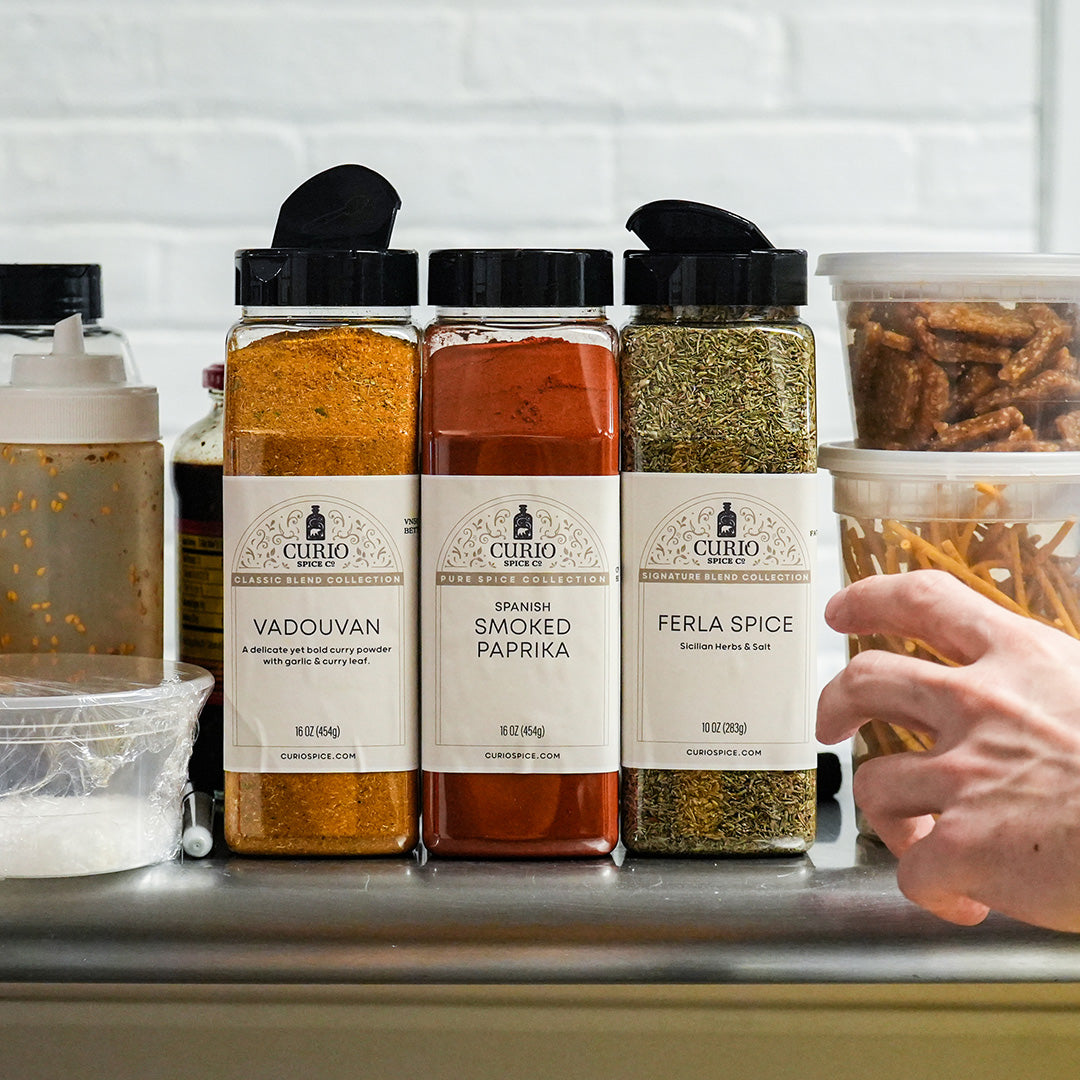Story of the Spice Wheel
It was about ten years ago when I first had the idea to pursue spices as a career. I had worked in specialty coffee for many years, doing many deep, caffeinated dives into the world of single origin coffee where the term 'terroir' was in common use. Terroir, from the French, refers to the earth and climate that gives a particular food a specific flavor profile. The same item, such as a coffee bean, can brew up a different flavor whether it’s grown in Bolivia or East Timur, even though the coffee species is the same in both places. A taste of place is terroir, a taste of the air and dirt and minerals and water and moonlight and monkey whispers. It's traditional to the wine industry, but also comes up in cheese, coffee, chocolate, and spices, too.
I was done with the coffee industry, tired of tasting espresso, and had moved into the spice realm, but I didn't know where to turn to hone my flavor muscles. I couldn't find any formal education on spices, nor did I want to dive back into academia. So, I hunted and hunted and found a course on natural perfume in Berkeley, California led by a former therapist turned perfumer. Perfect. Bring on the scent and feelings!

Studying with Mandy Aftel opened my mind further to the concept of layers of scent - where, just like in a musical chorus where you have the bass singers (low notes), altos (middle notes) and sopranos (high notes), the layers come together to create harmony.
I was inspired by Mandy's perfume wheel (a colorful wheel that showcases the different essential oils grouped by categories, like a coffee flavor wheel, or a wine flavor wheel) but especially by her concept of grouping scents into these musical-like categories - base, middle and top notes.
Our sense of smell is one of the least understood senses in our bodies. Scientists are still studying how we interpret scents, how the messages travel in our brain and are stored in our memory banks. It's a common challenge to put words to scent, tastes, and flavors. The vocabulary is often just beyond reach, as our brains quickly take hold of the complicated set of scent molecules and connect them to associated experiences, preferences, emotions. Rhubarb and sage, jasmine and buttermilk, cinnamon toast, and decaying leaves. How do we make sense of it all? How do we decide what to cook for dinner? It's a complex combination of associations, olfactory nerves, memories, and differing sensitivities. But most importantly, it’s an enchanting journey into why we derive so much pleasure and meaning from food.

I first created Curio's spice wheel as a tool for myself, to teach myself more about how spices compare to each-other in the vast flavor landscape that includes over 10,000 different discernible aromas our noses can detect (but not always name). I used watercolor, as taught to me by a beloved Aunt Judy, to illustrate how scents and flavor overlap and blur into each-other, not always forming hard lines.
Visualizing flavor is an incredible tool to help fuel curiosity and knowledge, and that is the main purpose of the colorful side of the wheel. The colors don't work like an art-color wheel though, so keep in mind that fact if you are searching for complimentary flavors (that art-class concept need not apply!). Here are a few fun challenges as you study your spice wheel:
- There are 2 types of cinnamon on the wheel, and they aren't next to each-other. Find them on the wheel and then do a side by side smell test and taste test. What do you notice?
- We don't generally eat pine trees, but there are a few 'piney' and ‘resinous’ flavors on the wheel. Find them and think about this flavor association - what memories or other associations does it bring up?
- Take a seed or two of fennel, pop it in your mouth and plug your nose. Chew for a couple seconds then release your plugged nose. What's different? Do you picture any colors when you unplug your nose?
- Find a familiar spice on the wheel and then see if there are any in that section that you've never cooked with. Experiment with flavors that are adjacent to ones you know and experience how these different flavors create a new yet familiar taste experience.
Stay tuned for more terroir wheels such as the peppercorn wheel, and my country-inspired flavor wheels.
And remember, as our emblem the bear in our logo reminds us: follow your nose.
Click here to buy a printed Curio Spice Wheel








Leave a comment